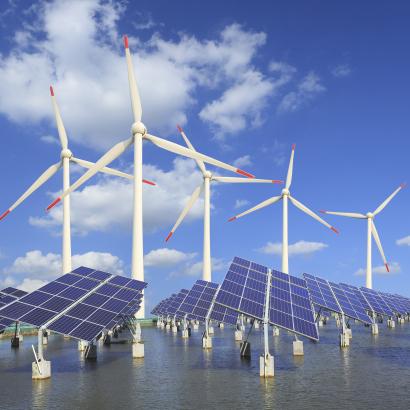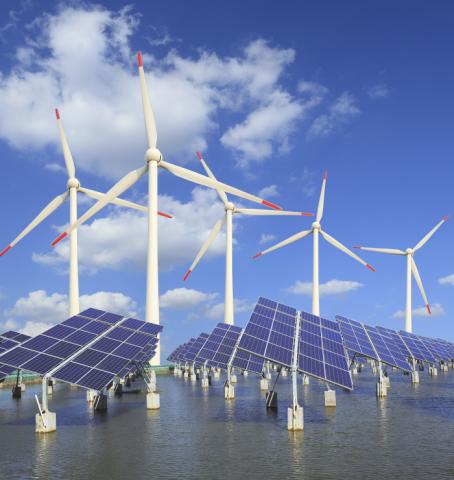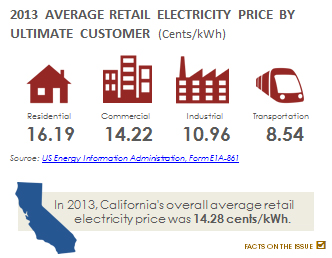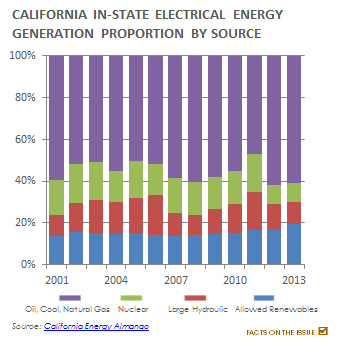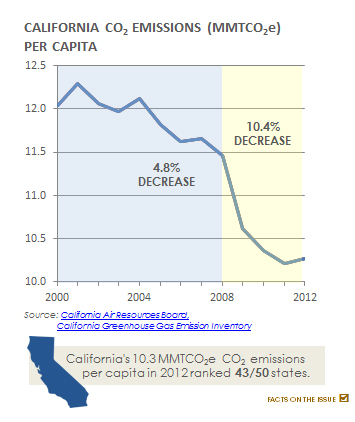- Energy & Environment
- State & Local
- California
In his annual State of the State address, Governor Brown outlined ambitious goals for taking California’s climate change policies to the next level. Historically, our state has held the position of groundbreaking leadership when it comes to aggressive environmental programs, so it comes as no surprise that Governor Brown wants to expand on this trend by enacting even more aggressive policies aimed at 2030 and 2050 climate change goals.
In particular, the Governor called for California to increase its reliance on renewable power to 50 percent. Not only is this an extremely ambitious goal, but experience shows that overreliance on renewable power leads to increased costs and reduced grid reliability (while offering uncertain or minimal environmental benefits).
Currently, California utilities are required to reach a 33 percent Renewable Portfolio Standard by 2020. Although costs for some renewable technologies are declining, particularly solar photovoltaics, generally the costs of renewables are still higher than conventional resources. So, utilities are now locked into expensive long-term renewables contracts – and now, these costs are phasing into ratepayer bills.
Already, the gap between California’s electricity rates and other states is significant. In 2012, the average retail electricity price for customers across all rate sectors (commercial, industrial and residential) was 37 percent higher in California than the national average (13.50 cents per kWh in California versus 9.84 cents nationally). And moving forward, if California goes to a 50 percent renewable standard without solving the cost issue, we can expect our businesses to be at an even greater competitive disadvantage.
Equally concerning is the potential for system reliability problems. The California Independent System Operator (CAISO), the nonprofit entity in charge of keeping the lights on in California, has voiced serious concerns about moving beyond the current 33 percent requirement. That’s because it’s harder to maintain reliability with renewables; solar and wind resource intermittency can vary significantly from year to year, season to season, and even hour to hour. Therefore, intermittent renewable production must be supplemented by other backup resources that can ramp up as needed.
The reliability issue is further inflated by renewable “over-generation” during certain times of day. There is a growing gap between California’s electricity needs versus the increasing amounts of solar being produced during the early afternoon. The CAISO has already seen the need to curtail renewable generation in 2014 and has warned that significant amounts of renewable energy will have to be curtailed at certain times if we go above the 33 percent requirement. Unfortunately, “curtailment” doesn’t actually save ratepayers money, since utilities are under contract to buy the renewable power from generators. So on a bright sunny day with solar power production at full throttle, California will actually be paying to ship that power elsewhere, or paying the producers to turn it off. That means ratepayers bear the burden of more expensive power, but don’t actually get the increased environmental benefits you would expect.
In setting new goals, California should also consider whether similar programs have worked in other jurisdictions. Germany set an aggressive goal to reach 80 percent renewable energy by 2050. Germany now gets a quarter of its power from renewable sources. But instead of positively impacting the global effort to fight climate change, Germany’s carbon dioxide emissions actually rose 1.3 percent in 2012. This is because the country has had to use more coal to provide backup power to supplement its renewable production while phasing out its nuclear resources.
Electricity in Germany is now 40 percent more costly for consumers and 20 percent more expensive for industrial users than the European Union average. Over the decade – when Germany rapidly increased its reliance on renewables – Germany's annual household bills increased by nearly two-thirds and over the past four years, prices for industrial customers have risen more than 30 percent. Businesses are citing energy costs as a major risk for German industry and the economy. And the German government has acknowledged that 6.9 million families are in energy poverty, which is defined as spending at least ten percent of household income on energy expenses.
So in Germany, an aggressive renewables goal has resulted in rising costs and rising emissions – presenting an ominous example for California.
We need to be clear about our policy goals in the state. Rather than setting arbitrary standards, California should be working with energy companies to identify the right strategies that will maximize emission reductions, while still keeping the price tag manageable. Only then will our “model” climate change programs be palatable enough for other jurisdictions to follow in our footsteps. And only with followers can California hope to make a global impact on the global climate change problem.

RENEWABLE PORTFOLIO STANDARD
California first established its Renewable Portfolio Standard (RPS) Program in 2002 and requires investor-owned utilities, electric service providers, and community choice aggregators to increase, from 20 percent in 2013 to 33 percent by 2020, the percentage of their energy sources from eligible renewable sources, which include solar thermal electric, photovoltaics, landfill gas, wind, biomass, geothermal electric, municipal solid waste, energy storage, anaerobic digestion, small hydroelectric, tidal energy, wave energy, ocean thermal, biodiesel, and renewable-fuel fuel cells, but exclude large hydroelectric and nuclear energy sources.








